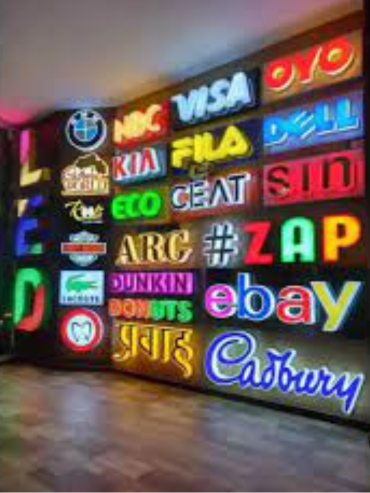LED Signages
LED signages are electronic displays that use light-emitting diodes (LEDs) to convey information, messages, or advertisements. These signages have become increasingly popular due to their energy efficiency, brightness, versatility, and the ability to create dynamic and eye-catching content. Here are some key aspects of LED signages:
-
Types of LED Signages:
- Outdoor LED Signs: These are used for outdoor advertising and are designed to withstand various weather conditions. They are often used for large billboards, building signs, and roadside displays.
- Indoor LED Signs: These are commonly used in retail spaces, airports, malls, and other indoor environments. They can be smaller in size and are suitable for displaying information, advertisements, or directional messages.
-
Benefits:
- Energy Efficiency: LED signages are more energy-efficient compared to traditional lighting methods, which can result in cost savings over time.
- Brightness and Visibility: LEDs produce bright and vivid colors, making the content easily visible even in daylight. This is particularly important for outdoor applications.
- Versatility: LED signages can display dynamic content, including text, images, videos, and animations. They offer a wide range of creative possibilities for advertising and communication.
- Longevity: LEDs have a longer lifespan compared to traditional bulbs, reducing maintenance costs.
-
Applications:
- Retail: LED signages are commonly used in retail environments for promotions, branding, and product displays.
- Transportation: Airports, train stations, and bus terminals often use LED signs for wayfinding, information displays, and advertising.
- Corporate: Companies use LED signages in lobbies, meeting rooms, and reception areas to showcase branding, announcements, and corporate messages.
- Entertainment: LED displays are popular in arenas, theaters, and concert venues for displaying dynamic content and advertisements.
-
Content Management:
- LED signages are often connected to content management systems that allow users to update and schedule content remotely. This flexibility is particularly useful for timely promotions and information updates.
-
Considerations:
- Resolution: Higher resolution LED displays provide clearer and more detailed content. This is crucial, especially for applications where viewers may be close to the signage.
- Weather Resistance: Outdoor LED signs should be designed to withstand varying weather conditions, including rain, snow, and temperature extremes.
-
Regulations and Permits:
- Depending on the location and type of LED signage, there may be local regulations and permits that need to be considered before installation.
When considering LED signages, it's important to work with reputable suppliers and consider factors such as the intended use, location, and content requirements to ensure the signage meets your specific needs.
